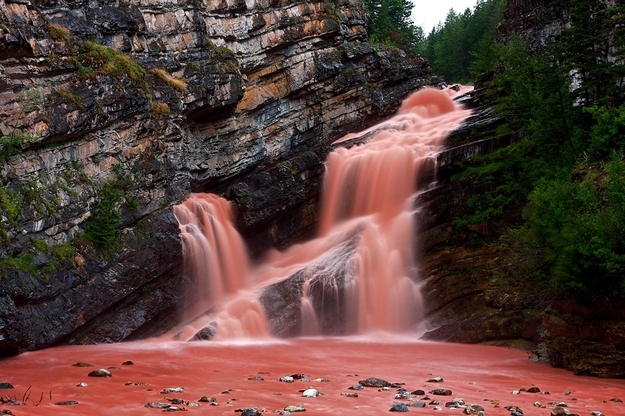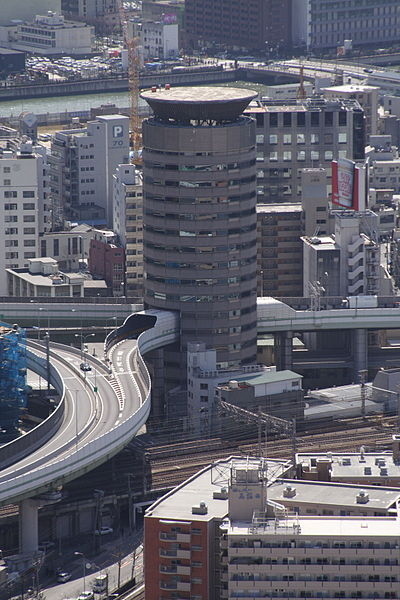1. Cameron Falls – Alberta, Canada
This might look like a scene straight out of the Bible, but it’s actually a natural phenomenon where large amounts of red-colored sediment called argolite washed down the waterfall due to heavy rainfall.
Image by Solent News / Rex / Rex USA
2. Krzywy Domek – Sopot, Poland
Nope, this isn’t a bad photoshop job. Krzywy Domek, Polish for “crooked house,” was actually built this way.
Source: Topory / via: en.wikipedia.org
3. Tunnel of Love – Klevan, Ukraine
You would be forgiven if you believed this to be the path to Narnia. Located in Klevan, Ukraine, this “Tunnel of Love” is actually a private railroad for a nearby fiberboard factory.
Image by Amos Chapple / Rex / Rex USA
4. Hanshin Expressway – Hanshin, Japan
Yes, that’s an elevated highway running through a building. This unusual situation was the compromise reached between the highway’s builders and the landowners, with the highway noted as the official “tenants” of the floors that it winds through.
Source: Ignis / via: en.wikipedia.org
5. Zhangye Danxia Landform Geological Park – Gansu Province, China
This zebra-like pattern in the mountains was created by different layers of red sandstone and other mineral deposits being compressed together over millions of years. The resulting “layer cake” was then cleaved and buckled into its current position by the same tectonic plates responsible for creating parts of the Himalayan mountains.
Image by Amos Chapple / Rex / Rex USA
6. Setenil de las Bodegas – Spain
This might look like houses moments away from being crushed by a giant rock, but is actually the town of Setenil de las Bodegas in Spain. Over the course of its history, locals have built houses into the rocky overhangs of the gorge.
Image by Juergen Richter / Getty Images
7. Magdeburg Water Bridge – Magdeburg, Germany
Yes, that’s a river on top of another river. This giant water bridge took six years to make and is the world’s longest navigable aqueduct.
Image by JENS SCHLUETER / AFP / Getty Images
8. Cube Houses – Helmond, Netherlands
These cube houses were designed by architect Piet Blom. Each house is supposed to represent an urban tree and the series of houses a forest.
Source: Geert C. Smulders / via: en.wikipedia.org
9. Wave Rock – Hyden, Australia
Wave Rock is an example of a geological phenomenon known as a flared slope. This usually occurs when erosion is concentrated on the lower areas of the slope.
Source: Kaliumfredrik / via: en.wikipedia.org
10. The Nine Hells of Beppu – Beppu, Japan
Beppu, Japan is home to more than 2,900 hot springs of which “The Nine Hells of Beppu” are the most famous. These nine hells have colorful names such as “Boiling Hell” and “Shaven Monk’s Head Hell,” with the above being the “Blood Pond Hell.” This natural hot spring gets its red color from the ferrous (meaning that it contains iron) minerals found in the pond.
Image by Tony Wheeler / Lonely Planet Images / Getty Images
11. Living Tree Bridge – Cherrapunji, India
Deep in the rainforests of the Indian state of Meghalaya lie some of the most extraordinary pieces of civil engineering in the world. Here, in the depths of the forest, bridges aren’t built – they’re grown. Cherrapunji receives about 50 inches of rain a year which would easily rot normal wooden bridges. This is why, 500 years ago, locals began to guide roots and vines from the native Ficus Elastica rubber tree across rivers using hollow bamboo until they became rooted on the opposite side – eventually creating a bridge.










